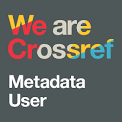Islamic Religious Education Curriculum Development Model
DOI:
https://doi.org/10.51574/ijrer.v2i4.936Keywords:
Education, Islamic Religious, Curriculum, Development ModelAbstract
The field of education is ever-evolving and always changing in the direction of perfection, both in terms of future readiness and adaptability to the environment and time in which it exists. In essence, the curriculum serves as a roadmap for carrying out the educational process in both schools and even colleges. There is no denying that curriculum implementation in the millennial era requires curriculum to change to meet the demands of the times. Islam itself strongly encourages movements for constructive development and change, believing that these are the keys to advancement and improvement. This problem served as the foundation for the formation of the research problem, which is the idea and framework for creating an Islamic religious education curriculum. Reference-based research—that is, observation centered on books, journals, or other publications—is the methodology employed. The study's findings demonstrate the curriculum's function in a number of areas that are important to educational activities, such as a) the school in question; b) schools or madrasas above it; and c) the community, which uses graduates. An eclectic method, or selecting the best of the four techniques listed below, can be used to build an Islamic religious education curriculum that fits its unique features. These methods include the following: a) subject-based methods; b) humanistic methods; c) technology methods; and d) social reconstruction methods. In the meantime, the Islamic education curriculum development model provides two alternatives for madrasas, including a competency-based and life skills-based curriculum development model and an Islamic Religious Universities competency-based curriculum development model.
References
Abdullah, M. A. (2022). Islamic Religious Education Based on Religious Intersubjectivity: Philosophical Perspectives and Phenomenology of Religion. Jurnal Pendidikan Agama Islam, 19(1), 141-164. https://doi.org/10.14421/jpai.2022.191-11
Abd Majid, F., & Abd Rahman, S. B. (2021). Preparing higher education ESL educators for the 21st century: Relevant teaching strategies for the millennials. Teaching and learning of english in the 21st century: Perspectives and practices from South East Asia, 30-42.
Anderson, T. R., & Rogan, J. M. (2011). Bridging the educational research‐teaching practice gap: Curriculum development, Part 1: Components of the curriculum and influences on the process of curriculum design. Biochemistry and molecular biology education, 39(1), 68-76. https://doi.org/10.1002/bmb.20470
Ashaari, M. F., Ismail, Z., Puteh, A., Samsudin, M. A., Ismail, M., Kawangit, R., ... & Ramzi, M. I. (2012). An assessment of teaching and learning methodology in Islamic studies. Procedia-Social and Behavioral Sciences, 59, 618-626. https://doi.org/10.1016/j.sbspro.2012.09.322
Anwar, C., Saregar, A., Hasanah, U., & Widayanti, W. (2018). The effectiveness of islamic religious education in the universities: The effects on the students' characters in the era of industry 4.0. Tadris: Jurnal Keguruan Dan Ilmu Tarbiyah, 3(1), 77-87. http://dx.doi.org/10.24042/tadris.v3i1.2162
Assunção Flores, M. (2005). Teachers' views on recent curriculum changes: Tensions and challenges. Curriculum journal, 16(3), 401-413. https://doi.org/10.1080/09585170500256479
Bailey, C. L., & O’Keefe, A. L. (2013). Group counseling curriculum: A developmental humanistic approach. VISTAS Online. American Counseling Association.
Baker, R. K. (2019). Introduction to library research in French literature. Routledge.
Banks, J. A. (2015). Cultural diversity and education: Foundations, curriculum, and teaching. Routledge.
Basid, A. (2017). Innovation of islamic education (pai) based on multiple intelligences. Didaktika Religia, 5(2), 325-344. https://doi.org/10.30762/didaktika.v5i2.864
Budiyanti, N., Aziz, A. A., Palah, P., & Mansyur, A. S. (2020). The Formulation of the Goal of Insan Kamil as a Basis for the Development of Islamic Education Curriculum. IJECA (International Journal of Education and Curriculum Application), 3(2), 81-90. https://doi.org/10.31764/ijeca.v3i2.2252
Chiang, H. M. (2017). Foundations and development of curriculum. Curricula for teaching students with autism spectrum disorder, 1-19. https://doi.org/10.1007/978-3-319-69983-7_1
Connaway, L. S., & Radford, M. L. (2021). Research methods in library and information science. Bloomsbury Publishing USA.
Cuervo-Montoya, E., & Uribe-García, J. A. (2021). The Philosophical, Anthropological, and Pedagogical Foundations of Curriculum as a Formative Process. In Oxford Research Encyclopedia of Education. https://doi.org/10.1093/acrefore/9780190264093.013.1427
Daheri, M. (2022). Religious Moderation, Inclusive, and Global Citizenship as New Directions for Islamic Religious Education in Madrasah. Nazhruna: Jurnal Pendidikan Islam, 5(1), 64-77. https://doi.org/10.31538/nzh.v5i1.1853
El-Yunusi, M. Y. M. (2023). Eksistensi Kurikulum Pesantren sebagai Sub Sistem Pendidikan Nasional (Konteks Kasus Pondok Modern Gontor Ponorogo). Jurnal Kependidikan Islam, 13(1), 30-43. https://doi.org/10.15642/jkpi.2023.13.1.30-43
Erihadiana, M., & Ridwan, A. H. (2021). Spiritual Intelligence of Islamic Education Concepts. In 5th Asian Education Symposium 2020 (AES 2020) (pp. 149-152). Atlantis Press. https://doi.org/10.2991/assehr.k.210715.031
Facer, K., & Sandford, R. (2010). The next 25 years?: future scenarios and future directions for education and technology. Journal of computer assisted learning, 26(1), 74-93. https://doi.org/10.1111/j.1365-2729.2009.00337.x
Fathurrochman, I., Danim, S., Ab, S. A., Kurniah, N., & Ristianti, D. H. (2021). Theoretical review of the implementation Islamic boarding school curriculum management in Indonesia. International Journal of Education Research and Development, 1(1), 1-15.
Fathurrohman, R., Arif, M., & Sirait, S. (2023). Concept and Implementation of Islamic Education in Islamic Education Institutions in Indonesia. DAYAH: Journal of Islamic Education, 6(1).
Fink, A. (2019). Conducting research literature reviews: From the internet to paper. Sage publications.
Flick, U. (2015). Introducing research methodology: A beginner's guide to doing a research project. Sage.
Gilead, T., & Dishon, G. (2022). Rethinking future uncertainty in the shadow of COVID 19: Education, change, complexity and adaptability. Educational Philosophy and Theory, 54(6), 822-833. https://doi.org/10.1080/00131857.2021.1920395
Grant, J. (2018). Principles of curriculum design. Understanding medical education: Evidence, theory, and practice, 71-88. https://doi.org/10.1002/9781119373780.ch5
Hasanah, N. (2021). The Role of Madrasah Ibtidaiyah in Building Student Characters in The Era Of The 4.0 Industrial Revolution. Nazhruna: Jurnal Pendidikan Islam, 4(2), 310-319. https://doi.org/10.31538/nzh.v4i2.1304
Hayani, A. (2018). Developing Curriculum of the Department of Islamic Religious Education IAIN Lhokseumawe Aceh. Sunan Kalijaga International Journal on Islamic Educational Research, 2(1), 146-166.
Huda, M. (2022). Implementation of Scientific Approach In Islamic Education Learning. Edukasi Islami: Jurnal Pendidikan Islam, 11(03). http://dx.doi.org/10.30868/ei.v11i03.4392
Ikhwan, A., Farid, M., Rohmad, A., & Syam, A. R. (2020). Revitalization of Islamic Education Teachers in the Development of Student Personality. In 1st Borobudur International Symposium on Humanities, Economics and Social Sciences (BIS-HESS 2019) (pp. 162-165). Atlantis Press.
Ismail, I. (2016). Character education based on religious values: an Islamic perspective. Ta'dib: Jurnal Pendidikan Islam, 21(1), 41-58. https://doi.org/10.19109/td.v21i1.744
Lafrarchi, N. (2020). Assessing islamic religious education curriculum in flemish public secondary schools. Religions, 11(3), 110. https://doi.org/10.3390/rel11030110
Mahfud, C. (2019). Evaluation of islamic education curriculum policy in Indonesia. Premiere Educandum: Jurnal Pendidikan Dasar Dan Pembelajaran, 9(1), 34-43.
Muhaimin, M. A. (2015). Manajemen Pendidikan (Aplikasinya dalam Penyusunan Rencana Pengembangan Sekolah/Madrasah). Prenada Media.
Nisa, S. H., Ahmad, D. S. W., Wulandari, R., & Febrian, M. F. (2022). Pengembangan Sistem E-Elearning Berbasis Kurikulum Tingkat Satuan Pendidikan Di SMAN 1 Talawi. Jurnal Informatika dan Teknologi Pendidikan, 2(2), 56-63. https://doi.org/10.25008/jitp.v2i2.36
Oliver, R., Kersten, H., Vinkka‐Puhakka, H., Alpasan, G., Bearn, D., Cema, I., ... & White, D. (2008). Curriculum structure: principles and strategy. European Journal of Dental Education, 12, 74-84. https://doi.org/10.1111/j.1600-0579.2007.00482.x
Pandey, P., & Pandey, M. M. (2021). Research methodology tools and techniques. Bridge Center.
Penney, D., Brooker, R., Hay, P., & Gillespie, L. (2009). Curriculum, pedagogy and assessment: Three message systems of schooling and dimensions of quality physical education. Sport, education and society, 14(4), 421-442. https://doi.org/10.1080/13573320903217125
Purwanto, M. B., Hartono, R., & Wahyuni, S. (2023). Essential Skills Challenges for the 21st Century Graduates: Creating A Generation of High-Level Competence in The Industrial Revolution 4.0 Era. Asian Journal of Applied Education (AJAE), 2(3), 279-292. https://doi.org/10.55927/ajae.v2i3.3972
Rahman, Z. A., & Shah, I. M. (2015). Measuring Islamic spiritual intelligence. Procedia Economics and Finance, 31, 134-139. https://doi.org/10.1016/S2212-5671(15)01140-5
Romiszowski, A. J. (2016). Designing instructional systems: Decision making in course planning and curriculum design. Routledge.
Roslan Mohd Nor, M., & Malim, M. (2014). Revisiting Islamic education: the case of Indonesia. Journal for Multicultural Education, 8(4), 261-276. https://doi.org/10.1108/JME-05-2014-0019
Saada, N., & Gross, Z. (2017). Islamic education and the challenge of democratic citizenship: A critical perspective. Discourse: Studies in the Cultural Politics of Education, 38(6), 807-822. https://doi.org/10.1080/01596306.2016.1191011
Saada, N., & Magadlah, H. (2021). The meanings and possible implications of critical Islamic religious education. British Journal of Religious Education, 43(2), 206-217. https://doi.org/10.1080/01416200.2020.1785844
Sadlo, G., & Richardson, J. T. (2003). Approaches to studying and perceptions of the academic environment in students following problem-based and subject-based curricula. Higher Education Research & Development, 22(3), 253-274.
Sahin, A. (2018). Critical issues in Islamic education studies: Rethinking Islamic and Western liberal secular values of education. Religions, 9(11), 335.
Sarakinioti, A., & Tsatsaroni, A. (2015). European education policy initiatives and teacher education curriculum reforms in Greece. Education Inquiry, 6(3), 28421. https://doi.org/10.3402/edui.v6.28421
Schneiderhan, J., Guetterman, T. C., & Dobson, M. L. (2019). Curriculum development: a how to primer. Family Medicine and Community Health, 7(2). https://doi.org/10.1136/fmch-2018-000046
Schwab, J. J. (2013). The practical 4: Something for curriculum professors to do. In Transforming curriculum for a culturally diverse society (pp. 89-117). Routledge. https://doi.org/10.4324/9781315045634-7
Scott-Baumann, A., & Cheruvallil-Contractor, S. (2015). Islamic education in Britain: New pluralist paradigms. Bloomsbury Publishing.
Sellami, A. L., Sawalhi, R., Romanowski, M. H., & Amatullah, T. (2022). Definitions of educational leadership–Arab educators’ perspectives. International Journal of Leadership in Education, 25(5), 767-786. https://doi.org/10.1080/13603124.2019.1690701
Suhayib, & Ansyari, M. F. (2023). Design of Islamic Religious Education: Purposes, alignment of curriculum components and contexts. British Journal of Religious Education, 1-12. https://doi.org/10.1080/01416200.2023.2220940
Suparjo, S., Hanif, M., & Senja, D. I. (2021). Developing Islamic science based integrated teaching materials for Islamic religious education in Islamic high schools. Pegem Journal of Education and Instruction, 11(4), 282-289.
Swick, K. J., Winecoff, L., Nesbit, B., Kemper, R., Rowls, M., Freeman, N. K., ... & Kent, L. B. (2000). Service Learning and Character Education: Walking the Talk. Linking Learning with Life.
Szymkowiak, A., Melović, B., Dabić, M., Jeganathan, K., & Kundi, G. S. (2021). Information technology and Gen Z: The role of teachers, the internet, and technology in the education of young people. Technology in Society, 65, 101565. https://doi.org/10.1016/j.techsoc.2021.101565
Tawil, S., & Harley, A. (2004). Education and identity-based conflict: Assessing curriculum policy for social and civic reconstruction. Education, conflict and social cohesion, 9.
Taufik, M. (2020). Strategic role of Islamic religious education in strengthening character education in the era of industrial revolution 4.0. Jurnal Ilmiah Islam Futura, 20(1), 86-104. http://dx.doi.org/10.22373/jiif.v20i1.5797
Taufik, M., & Firdaus, E. (2021). Saylor, Alexander and Lewis’s Curriculum Development Model for Islamic Education in Schools. Islamic Research, 4(2), 91-98. https://doi.org/10.47076/jkpis.v4i2.77
Tsoraya, N. D., Primalaini, O., & Asbari, M. (2022). The role of Islamic religious education on The development youths’ attitudes. Journal of Information Systems and Management (JISMA), 1(1), 12-18.
Tyler, R. W. (2013). Basic principles of curriculum and instruction. University of Chicago press.
Usman, M., & Zainuddin, M. (2021). The Exemplary Approach of Islamic Religious Education Teachers in Fostering Emotional Spiritual Quotient. AL-ISHLAH: Jurnal Pendidikan, 13(3), 2621-2630. https://doi.org/10.35445/alishlah.v13i3.644
Yang, W. (2022). Artificial Intelligence education for young children: Why, what, and how in curriculum design and implementation. Computers and Education: Artificial Intelligence, 3, 100061. https://doi.org/10.1016/j.caeai.2022.100061
Yasin, R. F. B. F., & Jani, M. S. (2013). Islamic education: The philosophy, aim, and main features. International Journal of Education and Research, 1(10), 1-18.
Young, M. (2013). Overcoming the crisis in curriculum theory: A knowledge-based approach. Journal of curriculum studies, 45(2), 101-118. https://doi.org/10.1080/00220272.2013.764505
Zubairi, Z., Nurdin, N., & Solihin, R. (2022). Islamic Education in the Industrial Revolution 4.0. Scaffolding: Jurnal Pendidikan Islam dan Multikulturalisme, 4(3), 359-371. https://doi.org/10.37680/scaffolding.v4i3.2118









1.png)













